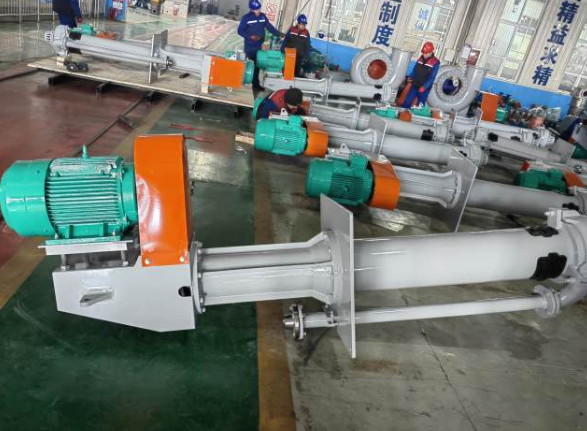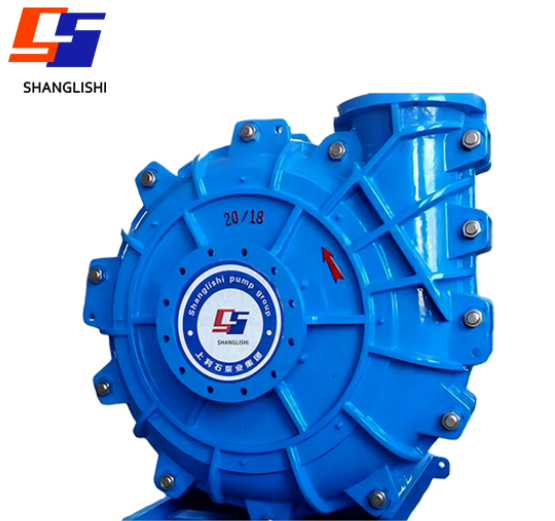How to Design a Slurry Pump?
Published:
Apr 10,2025
Centrifugal slurry pumps are critical components in mineral processing facilities, distinguished from traditional pumps by their unique features. This post explores these distinctions and the design principles behind slurry pumps.

Centrifugal slurry pumps are critical components in mineral processing facilities, distinguished from traditional pumps by their unique features. This post explores these distinctions and the design principles behind slurry pumps.
Design Criteria
Slurry pumps are engineered to meet specific operational needs:
-
Handling High-Density Slurries: They must effectively pump abrasive slurries with high density, all while ensuring a reasonable wear life.
-
Passing Larger Solids: Slurry pumps should be capable of handling larger solids.
These requirements lead to pumps that are generally larger and less efficient than conventional pumps.
Wear Resistance and Materials
Since components in contact with abrasive slurry are prone to wear, minimizing this is crucial. This can be achieved through thoughtful design, appropriate material selection, and proper pump operation. Slurry pumps may be delivered either unlined or fully lined with wear-resistant materials, but in all cases, a thick-walled pump casing is necessary.
To accommodate larger solid particles, slurry pumps feature an impeller casing with large clearances, which reduces internal velocities and wear. The impellers in slurry pumps are typically larger than those in standard pumps to lower impeller speed while still achieving the required head. For applications with high wear, closed impellers are preferred.
To further reduce wear and allow larger particles to pass, slurry pumps have fewer and thicker vanes compared to water pumps. While water pump impellers typically have between five and nine vanes, slurry pumps usually have four to five, with heavy-duty versions having even shorter, thicker vanes. This design results in a flatter curve and may reduce efficiency by up to 10% compared to water pumps of the same power.
Considerations for Derating
The operating point of a slurry pump is influenced not only by the pump’s curve and the system it operates within but also by the characteristics of the slurry being pumped. As a result, the pump head and efficiency may differ from the expected performance, leading to a reduction in power rating. To ensure proper pump selection, designers must anticipate this derating and choose a slurry pump with the necessary specifications and motor horsepower for the expected operating conditions.
The primary causes of reduced power ratings when handling solids include:
-
Energy Loss: Due to slippage between water and solid particles during acceleration and deceleration of the slurry.
-
Increased Friction: Higher slurry concentrations lead to greater friction losses.
-
Energy Transfer Issues: Suspended particles cannot store or transfer pressure energy effectively.
-
Mechanical Friction: Variations in the gap between the impeller and sidewall increase energy consumption and reduce efficiency.
Derating is quantified by two ratios: Pressure Head Ratio (HR) and Efficiency Ratio (ER), where:
-
HR = Top Slurry Head / Top Water Head
-
ER = Slurry Efficiency / Water Efficiency
These ratios are influenced by factors such as:
-
Specific Gravity of Solids
-
Volume Concentration
-
Particle Size-to-Impeller Diameter Ratio (d50 / D)
-
Use of Speed Reducers
Speed Reduction and Components
Many slurry pumps operate at lower speeds and require a speed reducer. Smaller pumps (under 350 hp) use a belt drive as a reducer, while larger pumps use a gearbox. For variable flow conditions, a variable speed drive (such as a frequency converter) is employed to adjust the pump speed.
Slurry pumps also feature larger shafts and bearings compared to conventional pumps. This is due to the increased force required to pump high-density slurries, as well as the need to accommodate wear and shock loads from large particles.
Material Selection
Wear parts for slurry pumps are often made from materials like carbide and elastomers. Carbide is durable against wear, while elastomers help absorb the energy from impacting particles.
For mill circuit applications, where the slurry contains large, sharp, and often corrosive particles, hard metal impellers are commonly used. In other processing applications, such as tailings management, both metal and elastomer bushings are frequently utilized.
How much leakage is acceptable?
The most likely place for leakage in any centrifugal pump is at the point of contact between the shaft inlet and the impeller chamber. Whether or not you need to worry about leakage depends on the slurry being handled.
The most basic seal (and the least expensive for the manufacturer) is a flexible and absorbent rope sealant called a gland seal. The tighter the packing, the less leakage, but the more resistance it creates. In order to maintain a long-term balance of these two opposite characteristics, the gland seal needs to be repacked periodically.
If you're ready to enhance your operations with a reliable and efficient slurry pump, now is the perfect time to invest in a Shanglishi slurry pump. Renowned for their durability, high efficiency, and low maintenance requirements, these pumps are engineered to handle the most demanding industrial environments. With over 40 global offices and a commitment to quality, Shanglishi ensures that each pump meets the highest standards. Whether you're in mining, chemical processing, or municipal services, a Shanglishi slurry pump is a smart choice for long-term performance and cost savings. Contact us today to discuss your specific needs and receive a tailored solution that drives your success.
An improvement on this is the use of a secondary impeller seal that rotates the shaft to reduce the pressure at its inlet; this works well when the pump is in full operation, despite the slight increase in resistance.
Keyword:
SHANGLISHI PUMP GROUP
Department Director: Ms. Wang
Tel: +86-311-82725800/82725629
Email: admin@sls-pump.com
WhatsApp: +86 15830676372
Mobile Website

Mobile Website
Copyright © 2022 SHANGLISHI PUMP GROUP




